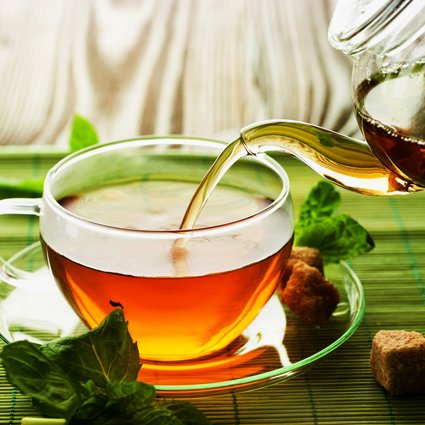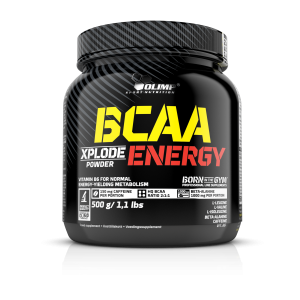The slimming effects of tea

TEA HUNGARIAN STYLE
The foodstuff most written about recently is without doubt tea. It is mentioned in articles either on health or on weight loss, since scientists have evidenced its pro-health and slimming effects. Also athletes are extremely interested in it – in bodybuilding sports, where the participant’s category depends on the ratio between muscle and adipose tissue, tea ranks third among the preferred food products, after rice and chicken breast meat. This is not surprising, since research has shown that tea facilitates both the reduction of subcutaneous fat and development of muscle mass.
Thus, understandably, there are developed capsule supplements based on highly concentrated tea extracts, such as Green Tea, enhancing the workout and body fat reduction.
It appears that some food plants of the European geographical area may have very similar properties to tea. They have once been highly prized for the healing and energising properties, but now are forgotten and linger on the margins of dietary recommendations. The most current knowledge about their health significance has been significantly expanded, and this is owing to, ironically, the studies on dietary food plants from the Far East. But, one step at a time...
MOST ACTIVE INGREDIENTS
As it is currently believed, tea owes its activity primarily to two components: epigallocatechin gallate (EGCG) and caffeine. Both have a special quality: they elevate the levels of an extremely valuable substance – cyclic adenosine monophosphate (cAMP). It is valuable to the body condition and shape because cAMP is responsible for the body's capacity to work. It activates the cerebral cortex, strengthens the heart and muscles, dilates the bronchi and the blood vessels in the working muscles. At the same time, it breaks up fat reserves for energy production and builds muscle proteins for strength gain. Thus it appears that it is largely owing to cAMP that an athlete may build their body and statuesque shape. Furthermore, it clearly transpires that consumption by sportspersons of food increasing the level of this compound in the body is by all means justified.
IN THE MISTS OF HISTORY
Most health recommendations concerning tea, such as the prevention of cancer, have been established only recently. In the old medical systems this beverage was considered primarily as generally energising product (tonic). It was precisely owing to its effects in improving the exercise capacity that it was recommended as means against fatigue and weakness associated with age or illness and in the convalescence period after an illness or sustained battle wounds.
Quite early on, there have also appeared recommendations for the use of tea as a weight loss measure. The population was then not faced by weight problems, but the Chinese and Japanese lords did, and to prevent them they reached for tea infusions. However, tea arrived in Europe as late as in the 16th century, and it is hard to believe that the people of the old continent had not known previously any means that would strengthened them in similar situations. To solve this problem, we need to go back to the old herbaria and see if any plant had been used for a similar purpose in Europe before the Portuguese brought in tea with them. It turns out that the old annals list at least one – rosemary, recommended for insomnia, fatigue and syncope, as well as for strengthening the elderly and convalescents. It may be assumed that rosemary owes these properties to ingredients elevating the cAMP levels. The measures recommended earlier in syncope, called analeptics (reviving), proved to be cAMP stimulators, and their best known representative is the caffeine in tea. Both rosemary and tea were recommended in breathlessness, and bronchodilators such as caffeine and theophylline in tea show this activity through the stimulation of cAMP. Of course, the obvious analogy of reinforcing activity of both plants does not need to be restated here. Rosemary was already known to the ancient Greeks, and often used by the Romans. However, its widespread use was popularised as late as in the 14th century, i.e. 200 years before the appearance of tea in Europe, by Elizabeth of Poland, Queen of Hungary. The daughter of Władysław I the Elbow-high, the wife of the Hungarian king, Charles Robert, she had a flair for medicine, and it was her who devised and applied passionately the rosemary infusion known as the “Hungarian water” – to be used as a perfume or a medicinal product. The fashion for rosemary was popularised through extremely broad European connections of the House of Anjou, from which the husband of Elizabeth, Charles, came. Although antique books say nothing about the slimming properties of rosemary, to be expected at this point, it is known from other sources that Elizabeth could entice with her alluring figure reportedly while still in her seventies.
DISTANT WAY
And now more examples of how twisted the paths of history are...
As in Europe rosemary was popularised by the Polish princess Elizabeth, so was tea in Asia by an Indian monk Daruma. But, what is known about the impact of rosemary on the elevation of cAMP levels would remain a rumour if not for the Indian tradition and modern science...
At some point, the researchers turned their attention to the old Indian vegetable and herb, also used in folk medicine – Coleus – known as painted nettle, for the lack of better name. The Hindu tradition professed that eating Coleus strengthens the body and the heart, prevents asthma and facilitates weight loss. First, the researchers isolated the most active ingredient of this plant - forskolin – and then proceeded to study its chemical and nutritional properties. It transpired that forskolin is a diterpene strongly stimulating the production of cAMP. Owing to this property, it strengthens the heart and dilates the bronchi, i.e. not only helps to maintain good health, but also promotes the development of physical fitness. More detailed studies have shown that it reduces body fat extremely strongly while moderately facilitating the development of muscles, which ultimately results in a very significant increase in the so called lean body mass. Thus, it appeared that Coleus has a good chance of becoming the favourite food of athletes, since “dry” muscles without fat determine their fitness level in the strength, high-speed, speed and strength, and especially bodybuilding disciplines.
But what does all of this have to do with our old rosemary? Well, it turns out that Coleus is its very close botanical cousin, while forskolin is a diterpene with a chemical structure characteristic only for the relatives of rosemary and Coleus, now called Lamiaceae (mint family), and formerly – Labiatae. The counterpart of forskolin from Coleus is rosmanol from rosemary. The family of Lamiaceae also includes several other common food plants, such as sage, basil, mint, lemon balm, oregano, thyme and marjoram. They all contain diterpenes, and all are thoroughly tested in this respect. At the moment, it is known that diterpenes of similar action to forskolin, namely karnezol and tanshinon, may be found in different sage species.
IN SPORTS DIET
Coleus cannot be bought at the fresh fruit and vegetable market. It grows only in the tropics, in the Indian peninsula and South-East Asia. However, its extracts are combined with those of tea and citrus fruit in the modern dietary supplements facilitating the reduction of body fat, such as Thermo Speed or Therm Line.
However, nothing prevents us from ensuring routine sports diet enrichment with plants from the Lamiaceae family. In the past, we could only use them dried as a cooking spice. Today, modelling on our southern neighbours, almost every grocery store offers an extremely wide selection of fresh plants ready for consumption in the form of salads. What can be said, except the traditional “here’s to you”! And added – “and your figure and form”!
Sławomir Ambroziak
BACK ›

